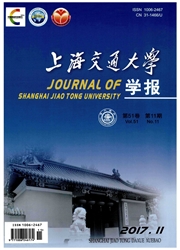

 中文摘要:
中文摘要:
为了实现利用肌电信号识别的智能轮椅系统控制,提出一种基于空域相关滤波的小波熵和近似熵特征提取与分类方法.通过分布在人体肩颈部的电极采集动作并产生多通道表面肌电信号,采用阈值比较与移动平均的数据分段方法确定活动段的起点和终点,在小波变换尺度间相关滤波的基础上提取活动段数据的小波熵和近似熵特征,设计具有二叉树结构的孪生支持向量机多类分类器,以完成5种动作模式的识别,并在预设的实验轨迹上对智能轮椅进行测试.结果表明,所提出的方法在人体头部左、右转以及双肩上提和左、右肩上提等动作模式下对肌电信号的识别率均达到88.75%.
 英文摘要:
英文摘要:
To realize the control of an intelligent wheelchair system based on electromyography(EMG),a novel feature extraction of wavelet entropy and approximate entropy and classification method was proposed based on spatial correlation filtering.First,multi-channel surface EMG signals were collected from the electrodes placed on shoulder or neck muscles.Secondly,the starting and ending points of each segment were determined by the data segmentation technique of threshold comparison and moving average.Then,the features of wavelet entropy and approximate entropy were extracted from each segment based on inter-scale dependency filtering by wavelet transform.Finally,a multi-classifier with binary tree structure was designed for twin support vector machine,and applied to recognize five movement patterns tested by driving an intelligent wheelchair on the designed trajectory.The results show that the patterns of different motion modes,including left and right turning of head as well as left-,right-and both-shoulders elevation,are discriminated effectively with recognition rates greater than 88.75%.
 同期刊论文项目
同期刊论文项目
 同项目期刊论文
同项目期刊论文
 期刊信息
期刊信息
